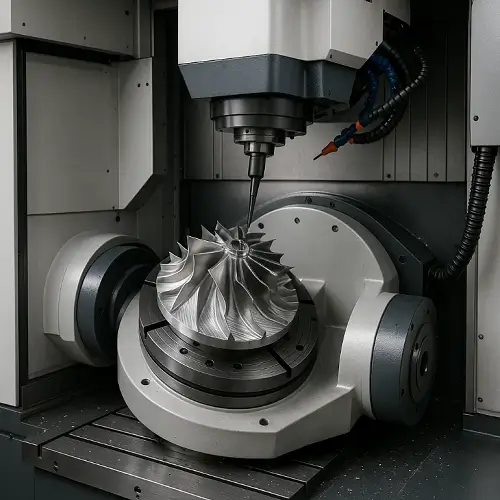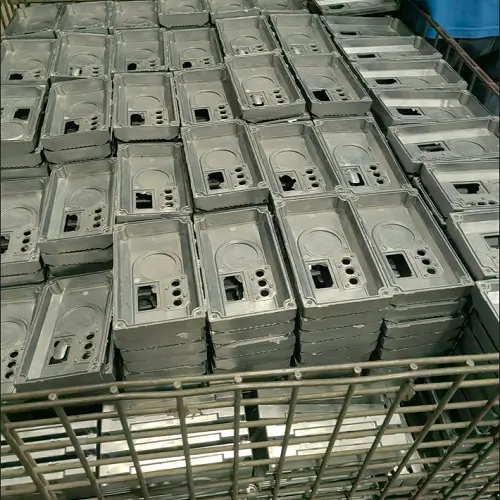The history of rivets extends back centuries. Blacksmiths once used iron rivets to secure armor plates and ship hulls, while during the Industrial Revolution, rivets became indispensable in locomotives, boilers, and large bridges. Iconic structures such as the Golden Gate Bridge used millions of rivets during construction. Even today, rivets remain essential in aerospace—modern aircraft like the Boeing 747 contain more than six million solid aluminum rivets, each ensuring that the fuselage skin withstands fatigue and pressurization loads over decades of service.
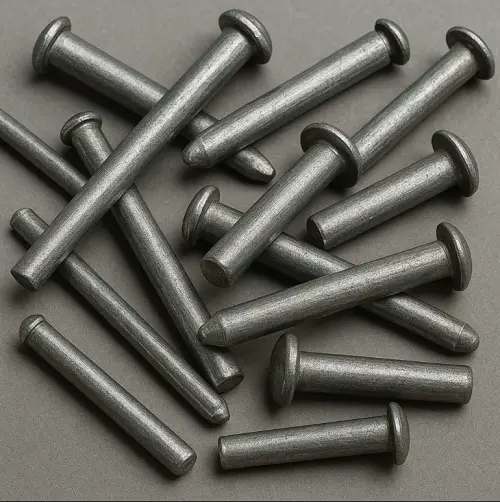
What Is a Rivet?
A rivet is a permanent mechanical fastener used to join two or more materials by inserting a pin through aligned holes and then deforming its tail to create a second head. This deformation locks the joint, providing strength and vibration resistance without relying on threads. Unlike bolts or screws, rivets cannot be reused once installed, but they deliver superior shear strength and reliability. These characteristics make rivets a vital fastening method across aerospace, automotive, construction, electronics, and consumer products.
Types of Rivets and Their Industrial Uses
Rivets exist in many designs, each tailored to specific assembly conditions.
Solid Rivets
Solid Rivets are the oldest and most reliable type, requiring access from both sides. They are hammered or compressed into place, delivering exceptional shear strength. Solid rivets remain the standard in aircraft structures and heavy steel construction.
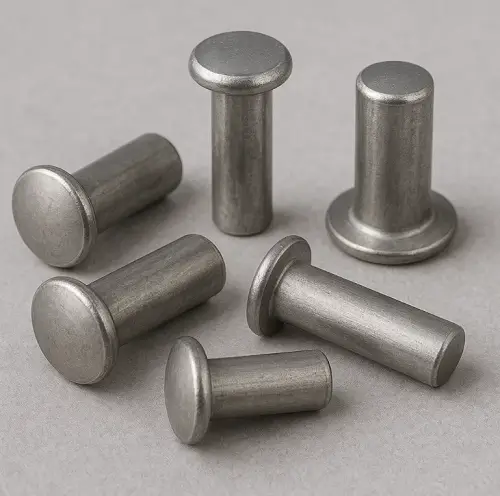
Blind Rivets
Blind Rivets, also known as pop rivets, allow installation from one side only. They are widely used in automotive bodywork, appliances, and sheet metal fabrication. Variants include sealed blind rivets for watertight assemblies and structural blind rivets that provide load capacity closer to bolts.
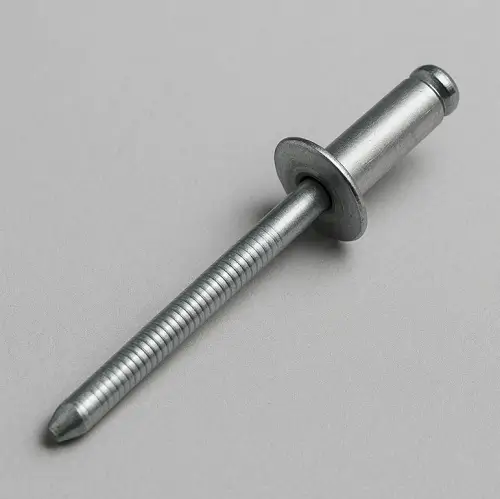
Self-Piercing Rivets
Self-Piercing Rivets eliminate the need for pre-drilled holes by piercing the upper sheet and flaring into the lower layer. This design is particularly popular in automotive production lines, especially for aluminum-to-steel joints.
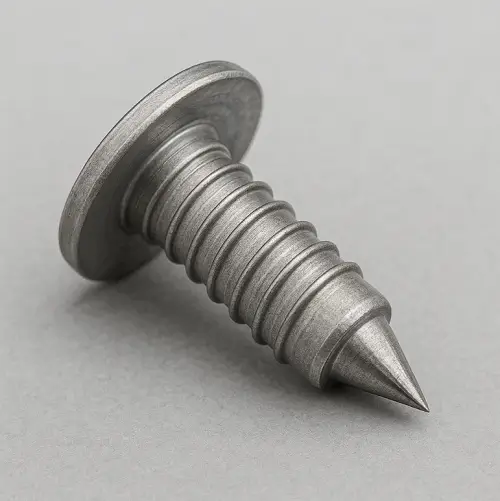
Structural Rivets
Structural Rivets are heavy-duty blind rivets used where both shear and tensile strength are required. They are found in bridges, railways, and large-scale machinery.
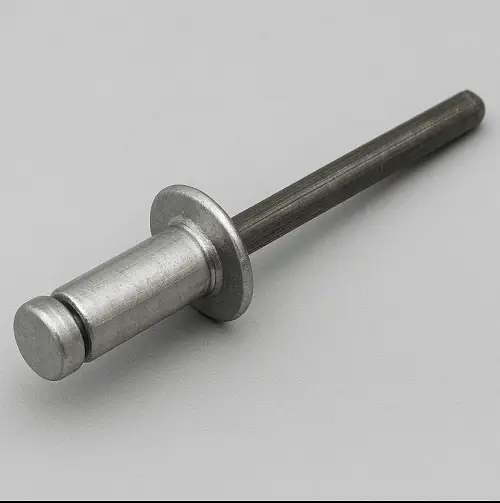
Tubular or Semi-Tubular Rivets
Tubular or Semi-Tubular Rivets feature a hollow end that requires less force to deform. They are common in furniture, luggage, and lightweight consumer products.
Flush or Countersunk Rivets
Flush or Countersunk Rivets sit level with the surface once installed, minimizing drag in aerospace or creating a smooth finish in automotive panels and sports equipment.
Split Rivets
Split Rivets have shanks that divide and spread apart during installation, gripping softer materials like leather, wood, or plastics.
Friction-Lock Rivets
Friction-Lock Rivets lock themselves in place as they deform, making them useful in lightweight aircraft maintenance and quick-repair situations.
Comparative Table of Rivet Types
| Rivet Type | Characteristics | Common Applications |
|---|---|---|
| Solid Rivet | High strength, requires two-sided access | Aircraft fuselages, bridges, heavy steel |
| Blind / Pop Rivet | Single-sided installation, efficient | Automotive panels, appliances, light sheet metal |
| Self-Piercing Rivet | Pierces without pre-drilling, fast | Automotive body structures, mixed materials |
| Structural Rivet | High shear and tensile load capacity | Bridges, railways, construction equipment |
| Tubular Rivet | Hollow end, low force installation | Furniture, electronics, light assemblies |
| Flush Rivet | Flush surface, aerodynamic, aesthetic | Aircraft skins, automotive outer shells |
| Split Rivet | Split shank grips soft materials | Leather goods, wood, consumer products |
| Friction-Lock Rivet | Automatic locking, quick setting | Aircraft repair, field installations |
Rivets vs Bolts and Screws
Rivets and threaded fasteners each have their strengths. Rivets excel in shear strength and vibration resistance, making them ideal for permanent assemblies. Bolts and screws provide higher tensile strength and allow disassembly, making them suited for machinery that requires regular maintenance. Cost and efficiency also differ—rivets are faster in high-volume production, while bolts are more flexible for small batch or serviceable assemblies. In practice, engineers select based on whether permanence or removability is more important.
Rivets vs Threads: When to Choose Each?
In manufacturing, rivets often serve as an alternative to threaded fasteners such as bolts, nuts, and screws, as well as welding. Rivets create permanent joints without threads, offering simplicity and excellent resistance to vibration. For example, in automotive body panels, blind rivets ensure fast assembly where access is limited. In aircraft fuselages, solid rivets provide distributed shear strength that prevents crack initiation.
Threaded connections, by contrast, shine in applications requiring disassembly, adjustment, or high tensile strength. Machinery, molds, and equipment frames rely heavily on bolts and nuts. They allow for repeated service, torque adjustments, and component replacement. Welding offers continuity but comes with heat-affected zones and inspection challenges.
Rivet Joint Design and Mechanical Behavior
A rivet joint resists shear loads exceptionally well, distributing stresses across the rivet body. Tensile resistance is lower compared to bolts, but this is compensated by using multiple rivets along a joint. Engineers consider spacing, pitch, and edge distance to avoid stress concentrations. Proper joint design ensures durability under fatigue, which is why aerospace standards define rivet placement with high precision.
Rivet Strength and Size Charts
Strength and size are critical in rivet selection. For example, an aluminum rivet with a 1/8-inch diameter may provide about 200 lbs of shear strength, while a stainless rivet of 1/4-inch can exceed 700 lbs. Rivet strength charts and rivet size charts help engineers match load requirements to rivet dimensions. International standards such as ASTM A502 and ISO specifications define materials and testing methods, ensuring rivets perform reliably across industries.
Rivet Installation and Tools
Installation depends on rivet type and production scale. Solid rivets are installed with a pneumatic rivet gun and a bucking bar, requiring access to both sides. Blind rivets are simpler, set from one side with a rivet gun that pulls the mandrel until it snaps off. Self-piercing rivets require hydraulic presses in high-speed production lines. Manual riveters, pneumatic guns, and hydraulic tools are all common. Inspection checks focus on hole diameter, deformation shape, and grip length, since improper installation can compromise joint performance.
Failure Modes and Maintenance
Although rivets are reliable, joints may still fail due to vibration, fatigue cracking, or corrosion—especially when dissimilar metals cause galvanic effects. Engineers counter these risks with protective coatings, compatible materials, and regular inspections. Removal is possible by drilling out the head, but rivets cannot be reused. In critical industries such as aerospace, replacement rivets are installed following strict quality standards to ensure continued safety.
Applications of Rivets Across Industries
Rivets continue to be indispensable across sectors. Aerospace relies on solid aluminum rivets for fuselages and wings. Automotive production uses blind rivets and self-piercing rivets in body structures. Civil engineering still applies structural rivets in bridges and towers. Electronics use small drive and blind rivets in casings, while furniture and consumer goods employ split rivets for leather, plastic, and wood assemblies. From the Golden Gate Bridge to modern cars and smartphones, rivets remain essential to design and manufacturing.
Standards and Specifications
Rivets are standardized to guarantee performance. ASTM A502 governs structural rivets, while ISO and DIN standards define dimensions and materials for industrial rivets. Aerospace rivets follow MS and NAS standards, such as MS20470, ensuring uniform quality across global aircraft production. By adhering to these specifications, manufacturers secure joints that meet demanding safety and performance requirements.
Conclusion
Rivets are far from obsolete; they remain one of the most practical fastening methods in modern engineering. By understanding rivet types, strength characteristics, installation practices, and how they compare with threads or bolts, engineers can make informed choices for any application. From aircraft and automobiles to bridges, electronics, and consumer goods, rivets continue to deliver reliability and efficiency.
JeekRapid provides CNC machining and custom manufacturing services that integrate riveted assemblies into both prototypes and production parts. Upload your design today to request a quote and ensure your project benefits from proven fastening solutions.
FAQs
Are rivets stronger than screws?
Rivets are stronger in shear, while screws outperform in tensile loading.
Can rivets be removed?
Yes, by drilling, but they cannot be reused afterward.
Which rivet is best for aluminum?
Blind aluminum rivets are suited for thin sheets, while solid aluminum rivets dominate aerospace.
Pop rivet vs blind rivet: are they the same?
Yes, “Pop” was originally a brand name but is now used generically for blind rivets.
What tools are used for rivet installation?
Manual riveters, pneumatic rivet guns, and hydraulic tools depending on production scale.
How to remove rivets safely?
Drill out the rivet head and push out the shank; replace with a new rivet.
Are rivets still used in bridges?
Yes, structural rivets continue to be used in bridges and heavy steel construction, though bolts now share the role.

